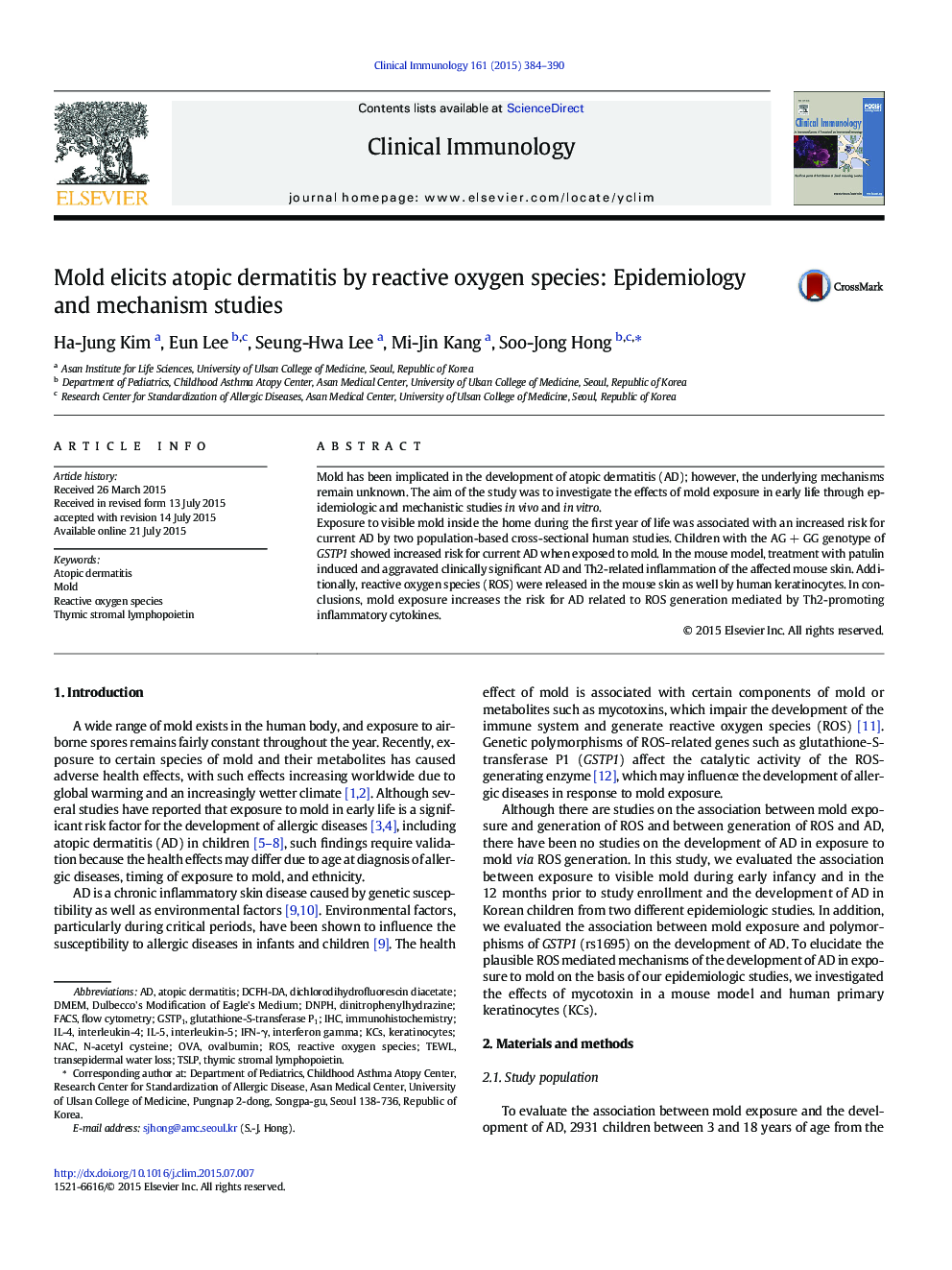| کد مقاله | کد نشریه | سال انتشار | مقاله انگلیسی | نسخه تمام متن |
|---|---|---|---|---|
| 6087163 | 1207349 | 2015 | 7 صفحه PDF | دانلود رایگان |
- Mold exposure was associated with AD by ROS gene expression in early life.
- This study firstly conducted in vivo and in vitro studies to show the mechanism.
- Thymic stromal lymphopoietin would be induced by ROS in the AD skin.
Mold has been implicated in the development of atopic dermatitis (AD); however, the underlying mechanisms remain unknown. The aim of the study was to investigate the effects of mold exposure in early life through epidemiologic and mechanistic studies in vivo and in vitro.Exposure to visible mold inside the home during the first year of life was associated with an increased risk for current AD by two population-based cross-sectional human studies. Children with the AGÂ +Â GG genotype of GSTP1 showed increased risk for current AD when exposed to mold. In the mouse model, treatment with patulin induced and aggravated clinically significant AD and Th2-related inflammation of the affected mouse skin. Additionally, reactive oxygen species (ROS) were released in the mouse skin as well by human keratinocytes. In conclusions, mold exposure increases the risk for AD related to ROS generation mediated by Th2-promoting inflammatory cytokines.
Journal: Clinical Immunology - Volume 161, Issue 2, December 2015, Pages 384-390
